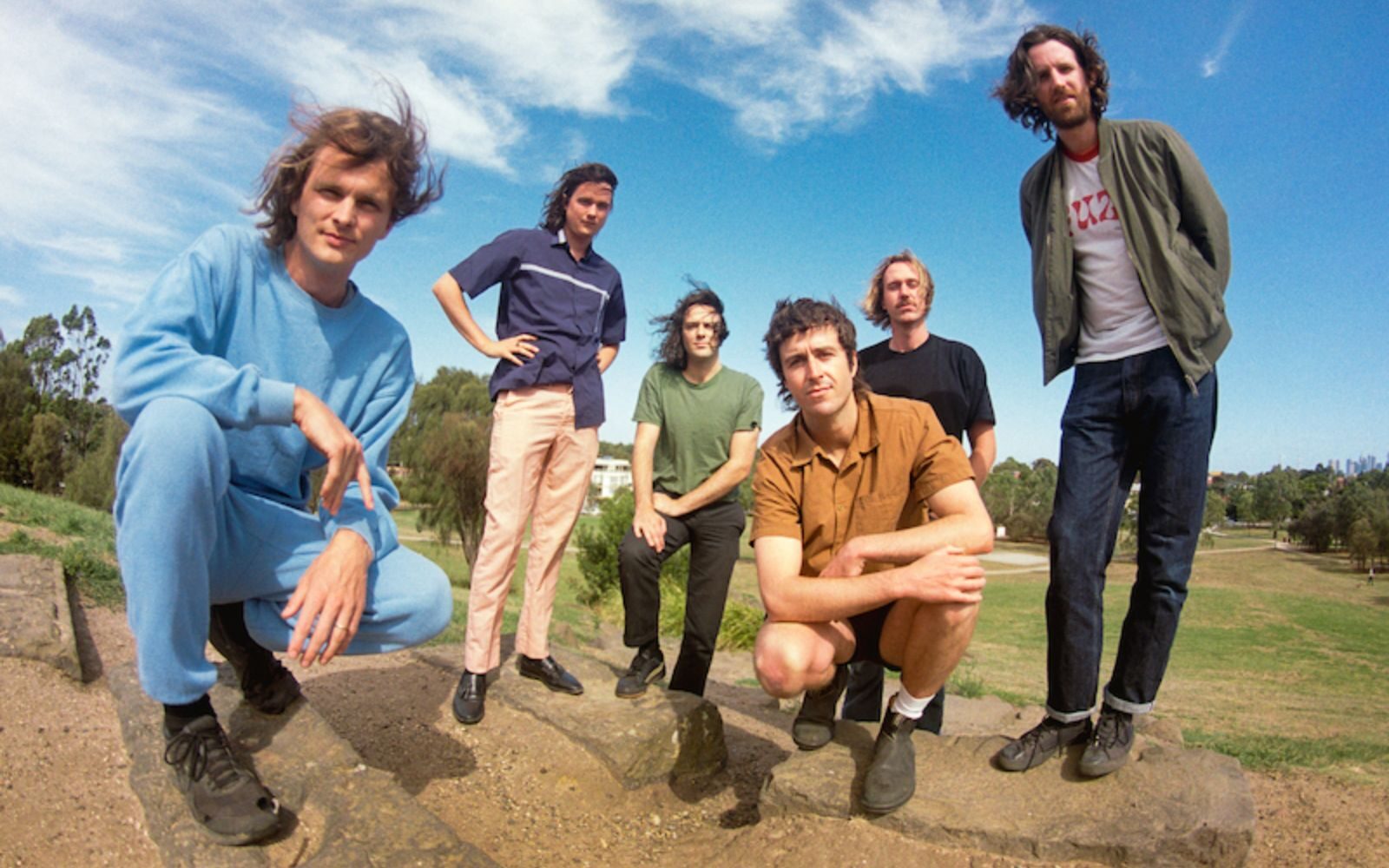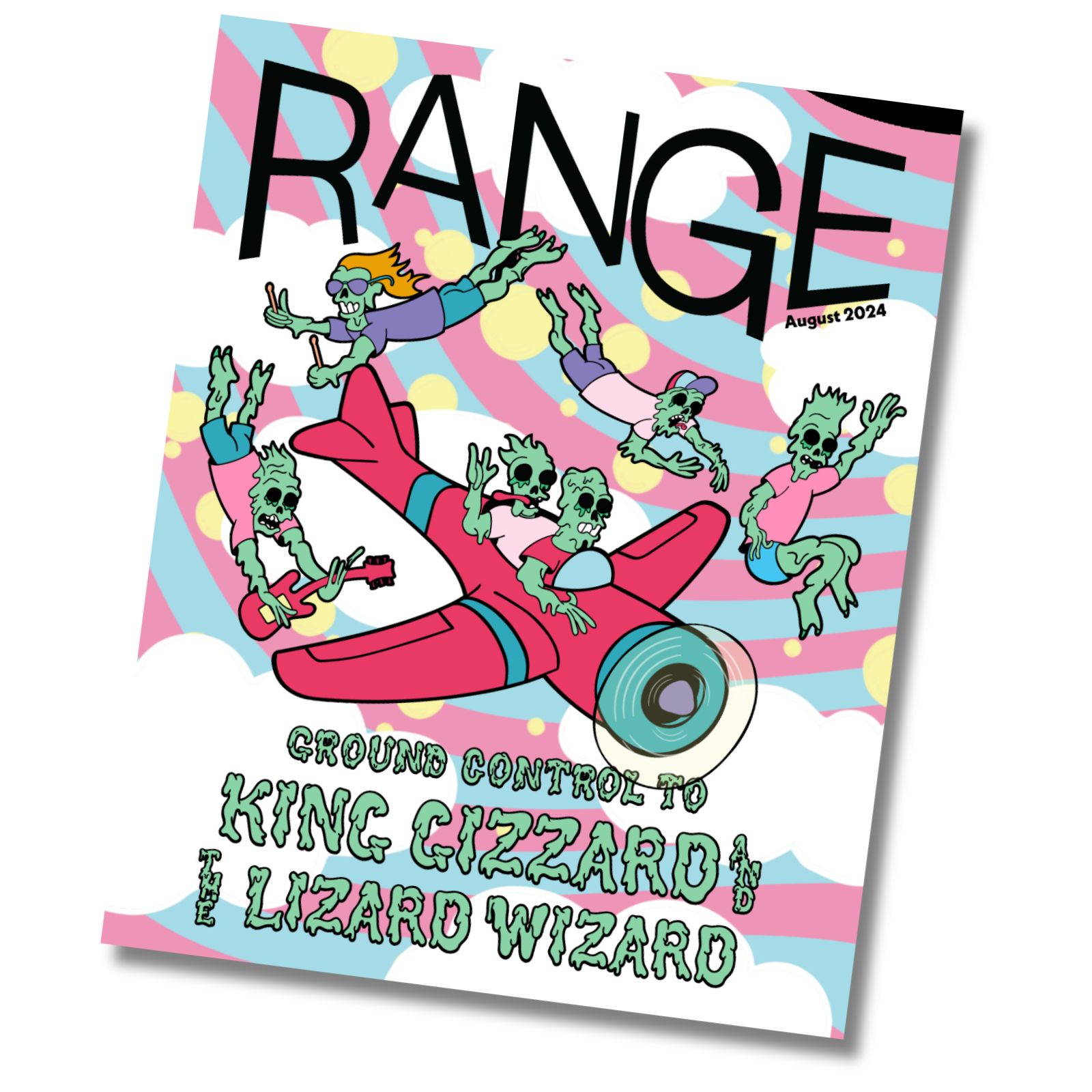By Cam Delisle
Between the virality of “Love Me Not” and the clarity of her sophomore LP, the Chicago-born soul innovator proves that real pop music takes time.

It’s an unlikely story. Improbable, even. A shape-shifting psychedelic rock band from Australia, with a name like King Gizzard and the Lizard Wizard, could become one of the biggest acts in independent rock music.
But here we are. Over the course of releasing 26 self-produced albums in 12 years — never mind the slough of EPs, live albums and bootlegs — and a relentless touring schedule, the Melbourne wildmen have amassed a devout audience that is just as fanatic online as it is IRL. Armies of their base follow the band from show to show, particularly in America, in a circus-like travelling roadshow.
And it keeps on growing.

“I honestly feel [stunned] after every tour,” says Lucas Harwood, King Gizzard’s bassist. “It still seems insane to me, and we don’t take it for granted. We’re very lucky, because we’re a very unorthodox band in a lot of ways. We’ve always made intentional decisions that are, like, literally the opposite of what most people would do.”
That list of decisions includes – though is not limited to – annual tours of Europe and North America since 2014, with their only hiatus taking place during the pandemic; releasing, since 2019, at least one album per year, and as many as five – including three in October 2022 alone; and doing so with a new concept and/or in a new genre every time. At a time when music feels confined to service an algorithm, King Gizzard – centred around primary songwriter Stu MacKenzie – pushes the limits of what psychedelic music can be, whether that be exercises in acoustic folk, prog-metal, electro-funk, jazz or, occasionally, hip-hop.
“The ethos of the band is definitely, you know, just different for the sake of being different,” Harwood says. “Stu especially is very, very dogmatic in that approach. And I think we’re [all] just very trusting of that ethos now because, you know, it’s continuing to work for us. It’s put us in good stead. We can just do whatever we want creatively, and I think that’s what every musician wants, right?”
The band’s 26th album, Flight b741 – out August 9 on the band’s new label, (p)doom – has been positioned in early press of the album as a sort of “back to basics,” which doesn’t mean a whole lot for a band that was never basic to begin with. But you won’t find any sci-fi storylines, experimental instrumentation, or even a guitar pedal, according to Harwood. Just six friends, their instruments and a loose aviation theme.
This is easily the most uplifting album in the band’s catalogue, buoyed by a collaborative writing process unique for the band and taking influence from late-60s and early-70s classic rock. It all results in shades of The Rolling Stones, Boston, Steve Miller and mid-2000s Super Furry Animals. It’s good-times rock ‘n’ roll as filtered through the King Gizzard prism.

Album opener “Mirage City” could be the sharpest left-turn in the band’s catalogue, coming off the doomscapes of the band’s 2023 albums, one of which carried the subtitle An Annihilation of Planet Earth and the Beginning of Merciless Damnation. Here, we have hints of countrified Gizz, with MacKenzie leaning into a bit of a drawl, glorious slide guitar layered in the back, and the band harmonizing like something off an early ‘70s Beach Boys record. The placement feels intentional – “a big choice,” as Harwood describes it, to announce a chooglin’ new era for the band.
“It’ll be easy to criticise [the album] as a kind of boring quote-unquote dad rock album, but I think it’ll be a bit of a grower for a lot of people. There’s a lot of depth to it,” Harwood says.
This new material opens a new door for the band now selling out shows at legendary outdoor venues like Red Rocks and the Gorge Amphitheatre, leaning into danceable, free-flowing rock ‘n’ roll that shares a common thread with the Grateful Dead and its progeny. The vibe suits them, too, since the band has more than a few similarities with the Dead, even if the music sounds nothing alike: a stubborn DIY attitude, a prodigious musical output, a fervent fan base that borders on cult-like, and a world-building visual aesthetic that lends itself to fan art, some of it even directly alluding to the Dead.
But lately, King Gizzard has taken to another concept the Dead pioneered – jamming.
“I don’t consider us a jam band, but there’s always going to be an element of that in Gizzard,” Harwood says. “Everything we play on stage has kind of developed some changes, you know, whether they’re old songs and we rehash them. The stage gives us a different context where happy accidents happen, and it makes you see [the songs] in a different light.”

“A lot of the time, when we come up with ideas, [they’re] happy accidents, like literally accidental,” he continues. “Someone made a mistake here, but it opens this new door. And we always debrief straight after the show and that’s when all those moments can be talked about. We just kind of bank them for future use.”
What that future use looks like is anyone’s guess at this point, and the band is characteristically coy about such details. At this point, the band could go anywhere. A deep dive into hip-hop? A bluegrass album? A sequel to 2016’s breakthrough album (and ideal starting point) Nonagon Infinity?
Only the Lizard knows. But one thing’s for certain – the band’s energy hasn’t waned, and nothing, it seems, can stall this acid-drenched travelling roadshow.
“None of us are planning on checking out anytime soon,” Harwood says. “I think we have the right formula and the right balance of all the elements right now. And it’s just – yeah, it’s really fun. I think that as long as it’s fun for us, we’re gonna keep doing it.”

By Cam Delisle
Between the virality of “Love Me Not” and the clarity of her sophomore LP, the Chicago-born soul innovator proves that real pop music takes time.
By Gregory Adams
The legendary indie rocker traces the lines from Pavement to Pavements.
By Ben Boddez
The famously riotous rapper’s new project, LETHAL, comes after a year of reckoning with her real self.